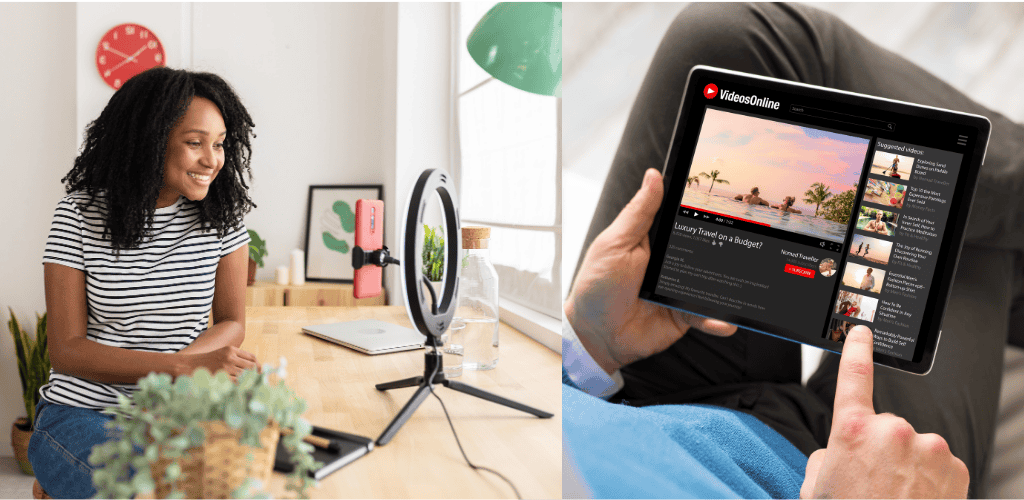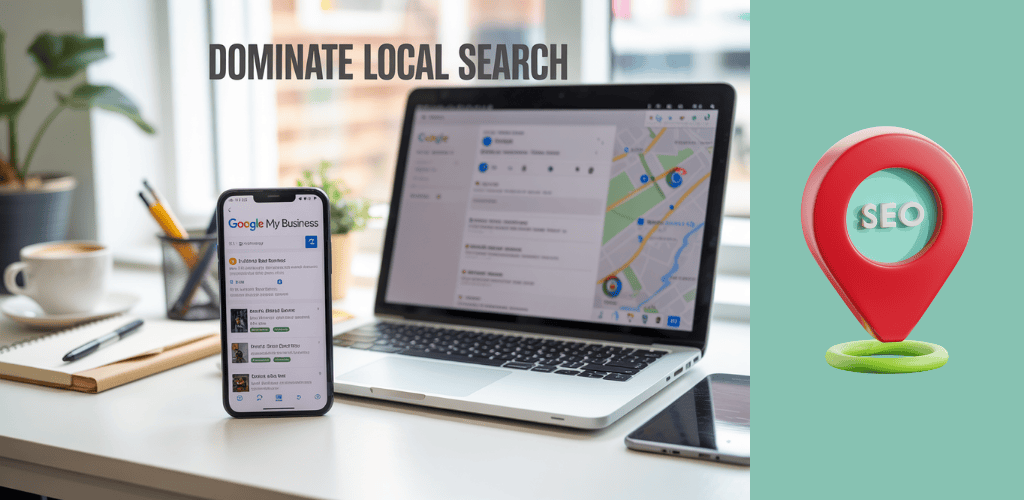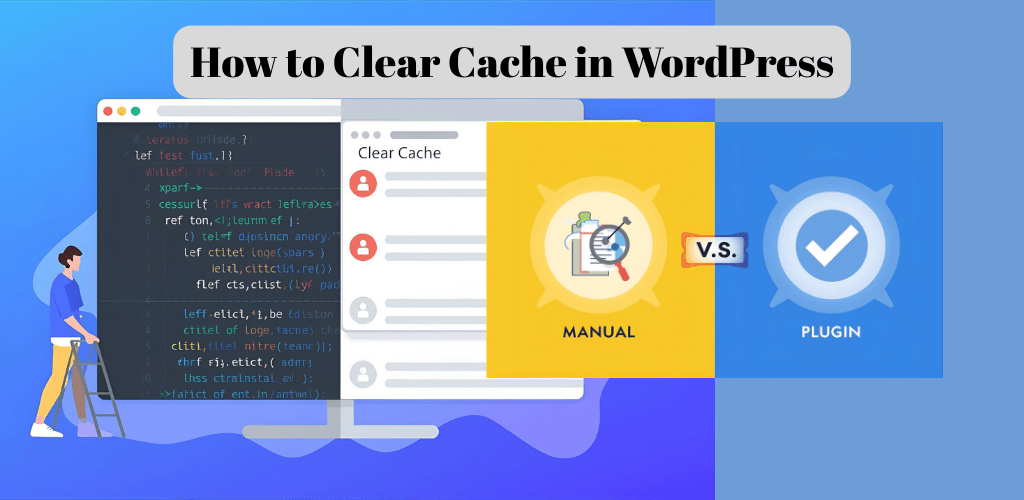Looking to boost your blog traffic without spending a dime? New bloggers and content creators on a budget can grow their audience without expensive ads or paid promotions. This guide shares proven free traffic strategies that work each year, including social media sharing techniques and simple SEO tweaks to help search engines find your content. We’ll also cover how creating high-quality, shareable content naturally attracts more readers to your blog.
Table of Contents
How To Get Traffic To My Blog For Free That Drives Organic Traffic
A. Focus on Google’s EEAT principles (Experience, Expertise, Authority, Trust)
Creating content that demonstrates your experience, expertise, authority, and trustworthiness is essential for driving organic traffic. To establish EEAT in your blog:
- Develop relationships with your audience first – Show there’s a real person behind your articles by responding to comments, offering advice, and thanking readers for engagement
- Build a loyal audience – Acknowledge your followers, offer occasional freebies, or send personalized emails to nurture those who find your content helpful
- Share your expertise – Provide detailed insights with practical tips, examples, and data that demonstrate your knowledge in your niche
- Include thorough research – Back up your claims with relevant facts and statistics to build trust with your readers and search engines
B. Conduct thorough keyword research using tools like SEMrush or Ahrefs
Effective keyword research is the foundation of content that attracts organic traffic:
- Use keyword planning tools – Leverage tools like SEMrush, Ahrefs, Google Ads, Google Trends, and Keyword Planner to analyze the right keywords for your content
- Analyze competition – Research what keywords your competitors are ranking for and identify opportunities to create better content
- Look for topic opportunities – Research has shown that longer-form content (2,100-3,000+ words) tends to attract more traffic, backlinks, and social shares
- Track performance – Regularly monitor which keywords are driving traffic to your blog and adjust your strategy accordingly
C. Write content based on search intent and what readers actually want
Understanding what your audience is looking for is crucial for creating content that performs well:
- Match content formats to search intent – Different formats work better for different queries:
- Long-form blog posts (2,250+ words) for comprehensive topics
- Listicles for easily digestible, shareable content
- Video content for topics that benefit from visual demonstration
- Long-form blog posts (2,250+ words) for comprehensive topics
- Focus on practical value – Provide actionable advice that readers can implement immediately
- Make content skimmable – Use heading tags (H2, H3), bullet points, and visuals to break up text and improve readability
- Address specific audience segments – Create targeted content that addresses the preferences and concerns of specific segments of your audience
D. Target easier-to-rank keywords with lower competition scores
Strategic keyword selection can help you gain traction faster:
- Balance difficulty with opportunity – While researching keywords, prioritize those with lower competition scores but meaningful search volume
- Consider long-tail keywords – These more specific phrases often have less competition and more targeted traffic
- Look for question-based keywords – Questions indicate clear search intent and often have less competition
- Identify content gaps – Find topics related to your niche that haven’t been thoroughly covered by competitors
- Start with achievable targets – Building momentum with rankings for easier keywords can help establish your domain authority before tackling more competitive terms
Remember that quality always trumps quantity. Research from multiple sources indicates that comprehensive, well-structured content consistently outperforms shorter, less detailed pieces in terms of organic traffic, backlinks, and social shares. By focusing on EEAT principles, thorough keyword research, search intent, and strategic keyword targeting, you’ll be well-positioned to create content that drives sustainable organic traffic to your blog.
Optimize Your Existing Content for Better Performance

A. Update old blog posts with current keywords and information
One of the most effective ways to drive traffic to your blog is by refreshing your existing content. Rather than constantly creating new posts, updating what you already have can yield significant results with less effort. Start by identifying which posts are already ranking but could perform better – these are your low-hanging fruit.
When updating old blog posts, focus on incorporating current keywords that match how people are searching today. Use tools like Ahrefs to identify which keywords you’re already ranking for, especially those where you’re close to the first page (positions 11-30) but not quite there.
Add recent statistics, updated information, and new insights to keep your content relevant. For example, if you wrote a post about social media marketing strategies in 2021, update it with the latest platform changes and trends for the current year. This signals to Google that your content is fresh and valuable to readers.
Remember that Google rewards content that demonstrates expertise, experience, authority, and trustworthiness (E-E-A-T). When updating posts, strengthen these elements by elaborating on previous points, adding new industry insights, and referencing relevant examples.
B. Improve titles to match how people actually search
Titles play a crucial role in your content’s performance. When optimizing existing posts, check if your titles accurately reflect how people search for information today. Keywords evolve over time, and so should your headlines.
Use your keyword research to craft titles that naturally incorporate your focus keywords. The ideal title should be clear, compelling, and match search intent. For example, instead of “Blog Traffic Tips,” a more specific title like “7 Proven Ways to Increase Blog Traffic for Free in 2023” will likely perform better.
When updating titles, ensure your primary keyword appears near the beginning. This helps both readers and search engines quickly understand what your content offers. However, avoid keyword stuffing – your title should read naturally and appeal to human readers first.
C. Add valuable new elements like videos, images, or additional content
One of the most effective blog updates is adding rich media elements. Consider creating videos that summarize or expand on your written content. These videos can be embedded in your post and also published on YouTube, opening up a new traffic source.
High-quality, relevant images break up text and make your content more engaging. When adding images, be sure to name your files with keywords (e.g., “increase-blog-traffic-infographic.jpg” rather than “img001.jpg”) and include alt text with your focus keywords.
Create infographics to summarize key points or illustrate complex concepts. These are highly shareable and can drive additional traffic from social media platforms.
Consider adding an FAQ section to your posts. This not only provides additional value to readers but also gives you an opportunity to rank for featured snippets in Google search results. Keep answers concise and directly address common questions related to your topic.
D. Ensure proper keyword placement in titles, headers, and alt text
Strategic keyword placement is essential for optimizing your content. Your primary keyword should appear in:
- Your main title (H1)
- At least a third of your H2 headings (but no more than 60% to avoid looking spammy)
- The first 100 words of your content
- Alt text for images
- Your meta description
Use a variety of heading levels (H2, H3, H4) to structure your content logically. This improves readability for both users and search engines. Each heading should provide a clear preview of the content that follows.
Don’t forget about semantic keywords – related terms and phrases that help search engines understand your content’s context. These should flow naturally throughout your post, particularly in subheadings and body content.
Finally, ensure your meta description is human-written (not auto-generated) and includes your primary keyword. Keep it under 160 characters to prevent truncation in search results. A compelling meta description can significantly improve click-through rates from search results pages.
When making all these updates, remember one crucial rule: never change the URL of your post. Changing URLs creates broken links and can seriously damage your SEO efforts. If you must change a URL, implement a proper 301 redirect.
Leverage Social Media and Video Content

Social media platforms have become essential channels for driving traffic to your blog without spending a dime. When implemented strategically, these platforms can significantly increase your visibility and direct interested readers to your content.
Create Short Educational Videos Highlighting Your Blog’s Main Points
Video content has emerged as one of the most powerful tools for driving web traffic and enhancing your social media strategy. In today’s digital landscape, people prefer video content more than any other format, especially when explaining complex topics.
Here’s why creating short educational videos works:
- Increased Engagement: Videos naturally grab attention, hold interest, and encourage action from viewers
- Better SEO: Video content can improve your search rankings across platforms and boost overall visibility
- Humanizes Your Brand: Videos allow potential readers to see the person behind the blog, fostering trust and connection
To effectively use video for driving blog traffic:
- Create bite-sized educational tips related to your blog topics (1-2 minutes max)
- Share key takeaways from your longer blog posts as teaser videos
- Show behind-the-scenes content of your blogging process to add a personal touch
- Keep videos concise and to-the-point to maintain viewer interest
When posting these videos, always include clear calls-to-action directing viewers to check out the full content on your blog.
Share Content Strategically in Relevant Facebook Groups
Facebook groups provide fertile ground for driving traffic to your blog, as they gather people with specific interests related to your niche. However, success here requires a strategic approach:
- Find active groups in your niche where your target audience already participates
- Become a valuable community member before promoting your content
- Answer questions thoughtfully and establish yourself as a helpful resource
- Share your blog content only when relevant to discussions or questions
Remember that engaging doesn’t mean spamming your links—it’s about providing value first. When you do share content, frame it as a helpful resource rather than a promotional pitch.
You can also create your own Facebook group around your blog’s topic. This gives you more control and creates a dedicated community where you can:
- Share exclusive content and insights
- Foster discussions related to your blog posts
- Build relationships with your most engaged readers
- Gain valuable feedback on your content
Add Social Sharing Buttons to Make Content Easily Shareable
If readers love your blog post but can’t easily share it, you’re missing out on free promotion. Make sharing effortless by:
- Embedding clearly visible share buttons near your content
- Placing buttons in strategic locations (top, bottom, and floating sidebars work well)
- Including the most relevant platforms for your audience
- Displaying share counts when possible to leverage social proof
As one marketing expert noted, “If someone reads your latest blog and absolutely loves it, could they share it? Make sure to embed share buttons really close to your content. Make them visually obvious, and show the number of shares to date as a bit of social proof.”
For maximum effectiveness, test different button placements to see what generates the most shares. Some blogs find that placing share buttons at the top of posts performs better than traditional bottom placement.
Use Click to Tweet Links for Key Insights from Your Posts
Click to Tweet links transform your blog’s key points into shareable social media content with minimal effort from your readers. Here’s how to implement this strategy effectively:
- Identify quotable snippets from your blog posts—insightful, concise statements that stand alone
- Create pre-formatted tweets with these snippets and a link back to your blog
- Insert these Click to Tweet links throughout your content, especially after important points
- Include your Twitter handle in the pre-formatted tweets to gain followers
This approach not only increases social shares but also highlights your most valuable insights, encouraging readers to engage more deeply with your content.
The beauty of Click to Tweet links is that they make sharing specific insights frictionless while simultaneously driving traffic back to your original post when others see and click on the shared tweet.
By implementing these social media strategies consistently, you’ll create multiple pathways for potential readers to discover your blog without spending money on advertising.
Build Community and Collaboration

Building a community around your blog creates loyal readers and opens new traffic channels. By fostering relationships with both readers and fellow content creators, you’ll create sustainable traffic growth that doesn’t rely solely on search engines.
Encourage User-Generated Content Through Contests and Reader Submissions
User-generated content not only provides fresh material for your blog but also increases engagement and creates a sense of community ownership. When readers contribute, they’re more likely to share that content with their networks, bringing new visitors to your site.
- Run photo contests related to your blog’s niche
- Create weekly challenges that encourage readers to submit their own solutions
- Feature reader success stories and case studies
- Establish a “reader of the month” program to recognize active community members
- Use polls and surveys to gather opinions, then publish the results as content
When implementing these strategies, make sure to acknowledge contributors properly and establish clear submission guidelines. This approach not only builds traffic but also deepens the relationship with your audience, turning casual readers into brand advocates.
Collaborate With Micro-Influencers in Your Niche
Micro-influencers often have higher engagement rates than celebrity influencers, making them valuable partners for driving targeted traffic to your blog. Their audiences tend to be highly focused and genuinely interested in niche topics.
- Identify micro-influencers whose audience demographics align with your target readers
- Focus on engagement metrics rather than follower count when evaluating potential partners
- Negotiate guest posting exchanges where you both create content for each other’s platforms
- Co-create valuable resources like ebooks, templates, or webinars
- Plan collaborative social media takeovers to introduce your blog to their audience
The key to successful micro-influencer collaborations is authenticity. Look for partners who genuinely connect with their audience and whose values align with your brand. This creates more meaningful referral traffic that’s likely to convert into regular readers.
Become a Guest Blogger on Relevant Industry Websites
Guest blogging remains one of the most effective ways to leverage other websites’ established audiences. By contributing valuable content to respected platforms in your industry, you can position yourself as an authority while earning backlinks and referral traffic.
- Research industry websites that accept guest contributions and have engaged audiences
- Study their content style and topics to pitch ideas that fill gaps in their existing coverage
- Create exceptional content that provides genuine value, not just promotional material
- Include a compelling author bio with a strategic call-to-action to visit your blog
- Actively engage with comments on your guest posts to build relationships
Remember that successful guest blogging is about building relationships, not just acquiring links. Focus on becoming a regular contributor to a few quality sites rather than pursuing one-off posts across many platforms.
Reference Other Companies and People, Then Reach Out to Them
When you mention other bloggers, experts, or companies in your content, you create natural opportunities for outreach that can lead to shares and backlinks. This approach, sometimes called the “ego bait” technique, leverages people’s natural desire to share content that portrays them positively.
- Reference industry studies, statistics, or tools created by others in your blog posts
- Include quotes from thought leaders and properly attribute them
- Create roundup posts featuring multiple experts or companies in your niche
- Write detailed reviews or case studies about products or services you genuinely use
- Tag the people and companies you’ve mentioned when sharing your content on social media
After publishing content that references others, send a personalized email or social media message letting them know. Be specific about what you appreciated about their work and make it easy for them to share your content with a brief summary and ready-to-use social media text.
By implementing these community-building and collaborative strategies, you’ll create multiple pathways for new readers to discover your blog while strengthening relationships with your existing audience. This approach creates sustainable traffic growth that withstands algorithm changes and evolving digital trends.
Use Email Marketing to Maximize Your Reach

Email marketing remains one of the most direct and reliable ways to share your blog content. When your posts land directly in your audience’s inbox, you encourage higher engagement and drive more traffic to your blog without spending a penny.
Set up automated blog notification emails for subscribers
Automated blog notifications ensure your subscribers never miss your latest content. When you publish a new post, these notifications immediately alert your audience, driving instant traffic to your blog.
To set up automated notifications:
- Create a welcome series that introduces new subscribers to your best content
- Implement a post-demo campaign that includes links to relevant blog posts
- Use drip campaigns to nurture leads with targeted blog content
- Set up RSS feeds (more on this below) to automatically send updates when new content is published
Timing is crucial when sending automated notifications. Research shows that emails sent between 10:00 a.m. and 11:00 a.m. typically achieve the highest open rates, but monitor your specific audience’s engagement patterns to determine the optimal time for your subscribers.
Capture email addresses with compelling opt-in forms
Building your subscriber list is arguably the most challenging part of email marketing, but you can’t maximize your reach without a substantial list of engaged readers.
To create effective opt-in forms:
- Place forms strategically throughout your blog (sidebar, end of posts, pop-ups)
- Offer a valuable lead magnet like an ebook, checklist, or exclusive content
- Use clear, action-oriented language on your CTA buttons
- Keep form fields minimal to reduce friction
- Highlight the benefits of subscribing, not just the features
Remember to include social proof elements like testimonials or subscriber counts to build trust and encourage sign-ups. Creating a sense of urgency or exclusivity can also boost your subscription rates.
Send regular newsletters featuring your latest content
Newsletters are powerful tools for promoting your blog content, with 81% of brands using them for content distribution. When crafting newsletters that drive traffic:
- Curate your content strategically: Don’t just dump links. Share teaser snippets or short excerpts to pique interest. Consider a brief newsletter format that features multiple blog highlights at once.
- Create clear CTAs: Craft compelling calls-to-action that motivate subscribers to visit your blog. Use action-oriented language like “Read more” or “Discover now” rather than generic text.
- Segment your list: Deliver personalized content experiences based on subscribers’ interests or other identifying factors. Segmentation allows you to send the most relevant blog posts to each segment, increasing click-through rates.
- Maintain a consistent schedule: Avoid overwhelming subscribers with too many newsletters. Find a frequency that keeps your audience engaged without causing email fatigue.
Track key metrics such as open rates, click-through rates, and social shares for each email to continuously refine your strategy and boost blog readership.
Use RSS feeds to automate content distribution
RSS (Really Simple Syndication) feeds provide an efficient way to automate your blog content distribution. By connecting your blog’s RSS feed to your email marketing platform, you can automatically send updates whenever new content is published.
Benefits of using RSS feeds include:
- Consistent delivery of fresh content to subscribers
- Time savings through automation
- Reduced risk of forgetting to promote new posts
- Ability to customize the email template while maintaining automated delivery
Most email marketing platforms offer RSS-to-email functionality that allows you to create templates that pull in your latest blog posts automatically. You can typically set the frequency (daily, weekly, monthly) and customize how the content appears in the email.
With these email marketing strategies in place, you’ll create a reliable system for promoting your blog content, maximizing your reach, and driving consistent traffic to your blog without spending money on ads or paid promotion.
Implement Strategic Promotion Techniques

After creating quality content and optimizing your blog, it’s time to focus on strategic promotion techniques that can drive free traffic to your blog. These methods require minimal investment but can yield significant results when implemented consistently.
Answer Questions on Quora with Links to Relevant Blog Posts
Quora is a powerful platform for driving targeted traffic to your blog. Here’s how to leverage it effectively:
- Search for questions related to your niche – Use Quora’s search function to find questions that align with your blog content
- Provide valuable, comprehensive answers – Don’t just drop links; offer genuinely helpful information first
- Strategically include anchor text – Within your answer, naturally incorporate clickable text that links to your relevant blog post
- Be consistent – Make answering Quora questions part of your regular promotion routine
Remember, the key to success on Quora is providing value first. If your answers are thin or obviously promotional, they won’t generate clicks or might even be removed by moderators.
Run Low-Cost Facebook Advertising Campaigns for Targeted Traffic
While completely free promotion is ideal, sometimes a small investment can yield significant returns:
- Start with a minimal budget – Even $5-10 can generate meaningful traffic when targeted correctly
- Create highly targeted audience segments – Focus on users who match your ideal reader demographics and interests
- Use compelling visuals – Eye-catching images or short videos increase engagement rates
- Test different ad formats – Try carousel ads, single image posts, or video content to see what resonates
- Monitor performance closely – Track which ads drive the most traffic and adjust accordingly
The benefit of even small-budget Facebook advertising is the precision targeting available, allowing you to reach exactly the right audience for your content.
Recommend Related Blog Posts to Keep Readers on Your Site Longer
Once visitors arrive at your blog, keep them engaged with strategic internal linking:
- Add a “Related Posts” section at the end of each article
- Insert contextual links within your content pointing to other relevant posts
- Create content clusters around key topics, linking related articles together
- Update older posts with links to newer, relevant content
- Use plugins or widgets that automatically suggest related content based on what the reader is currently viewing
This approach not only increases page views but also improves SEO by establishing content relationships and reducing bounce rates.
Create Interactive Content Like Quizzes and Calculators to Boost Engagement
Interactive content generates higher engagement and shareability:
- Develop quizzes related to your niche – People love to test their knowledge or get personalized recommendations
- Create useful calculators – Tools that solve problems for your audience provide immense value
- Design assessments or surveys – Help readers evaluate their current situation related to your blog topic
- Ensure shareability – Include social sharing buttons with the results
- Collect emails – Offer to send detailed results via email to build your subscriber list
Interactive content typically generates 2-3 times more engagement than static content, making it an excellent traffic driver when shared across platforms.
Remember, promotion isn’t something to be shy about. If you’ve created valuable content, people will appreciate you sharing it with them. Consistency in implementing these strategic promotion techniques is key to building sustainable traffic to your blog without spending money.
FAQ’s
How to get 1000 views per day on a blog?
Getting 1000 daily views isn’t magic—it’s strategy. First, you need consistent posting—aim for 2-3 quality articles weekly that actually solve problems for your readers.
Keywords matter, but don’t obsess. Find terms people actually search for but aren’t super competitive. Tools like Ubersuggest can help you identify these golden opportunities.
The secret weapon? Long-form content that goes deep. I’m talking 1500+ words that cover everything about a topic. Google loves comprehensive content, and readers stick around longer.
But here’s what most bloggers miss: promotion takes more time than creation. For every hour writing, spend three hours getting your content seen:
- Join 3-5 Facebook groups where your audience hangs out
- Answer related questions on Quora with links back to your blog
- Create Pinterest pins for every article (seriously, Pinterest can be a traffic machine)
- Email your list every time you publish something new
Remember that 1000 views won’t happen overnight. Most successful bloggers took 6-12 months of consistent effort before reaching this milestone.
How can a blogger increase traffic to his blog?
Want more eyeballs on your blog? Stop throwing content into the void and start getting strategic.
Internal linking is stupidly underrated. Connect your posts to each other so readers keep clicking through your site. This keeps people around longer and signals to Google that your content is interconnected and valuable.
Guest posting still works wonders. Find blogs in your niche with good traffic and pitch them ideas their audience would love. You’ll tap into their established audience while building backlinks.
Email subscribers are worth their weight in gold. They’re 40% more likely to read your content than social followers. Set up a simple lead magnet—a checklist, template, or mini-guide—to capture emails from day one.
Update old content regularly. That post from last year? Give it fresh stats, better examples, and republish it. Google rewards freshness, and you’ll squeeze more juice from work you’ve already done.
Try this content cluster approach:
- Create one massive “pillar” post on a broad topic
- Write several related “cluster” posts that link back to the pillar
- Link the pillar post to all clusters
This structure tells search engines you’re an authority on the subject.
How do you advertise your blog for free?
Paid ads are overrated when you’re starting out. These free promotion methods work just as well:
Community engagement beats mindless link dropping every time. Find where your people hang out online—Reddit, Facebook Groups, Discord servers—and become a helpful member. Answer questions thoughtfully, and only mention your blog when genuinely relevant.
Reddit can send massive traffic if you play it right. Find subreddits in your niche and share your best content (not all of it). The key is adding value in the title and first comment before anyone asks.
Repurpose like crazy. Turn blog posts into:
- Twitter threads
- Instagram carousel posts
- YouTube videos
- LinkedIn articles
- Podcast episodes
Each format reaches different people who might never visit your blog otherwise.
Comment marketing still works if done right. Find popular blogs in your space and leave thoughtful, valuable comments. Never just say “great post!” Add something substantial that makes readers think, “I want to hear more from this person.”
Why is my blog not getting traffic?
Your blog’s a ghost town? I’ve been there. The problem is usually one of these four issues:
You’re writing about what YOU find interesting instead of what people actually search for. Check Google Trends and keyword tools to confirm real humans are looking for your topics.
Your content looks like everyone else’s. Generic “10 tips” articles won’t cut it anymore. Add unique data, personal stories, or contrarian viewpoints that make readers stop scrolling.
Technical SEO matters more than you think. If your site loads slowly (over 3 seconds), mobile users bounce immediately. Use Google’s PageSpeed Insights to identify fixable issues.
You’re spreading yourself too thin across platforms. Pick ONE social channel where your ideal readers actually hang out and master it before adding others.
The most common mistake? Giving up too soon. Traffic growth isn’t linear—it’s exponential. Most blogs see minimal traffic for months before things suddenly click. The bloggers who succeed are simply the ones who kept publishing through the quiet months.
Conclusion
Growing your blog’s traffic doesn’t require a massive advertising budget. By consistently creating high-quality content that serves your audience’s needs, optimizing existing posts for search engines, and strategically leveraging free platforms like social media, you can significantly increase your readership without spending a dime.
Remember that building sustainable traffic takes time and persistence. Focus on community building through genuine engagement, utilize email marketing to nurture relationships, and implement strategic promotion techniques consistently. Start by applying these free traffic strategies today, measure what works for your specific audience, and adjust your approach accordingly. Your blog’s growth journey begins with these foundational steps that have proven successful for countless content creators before you.







